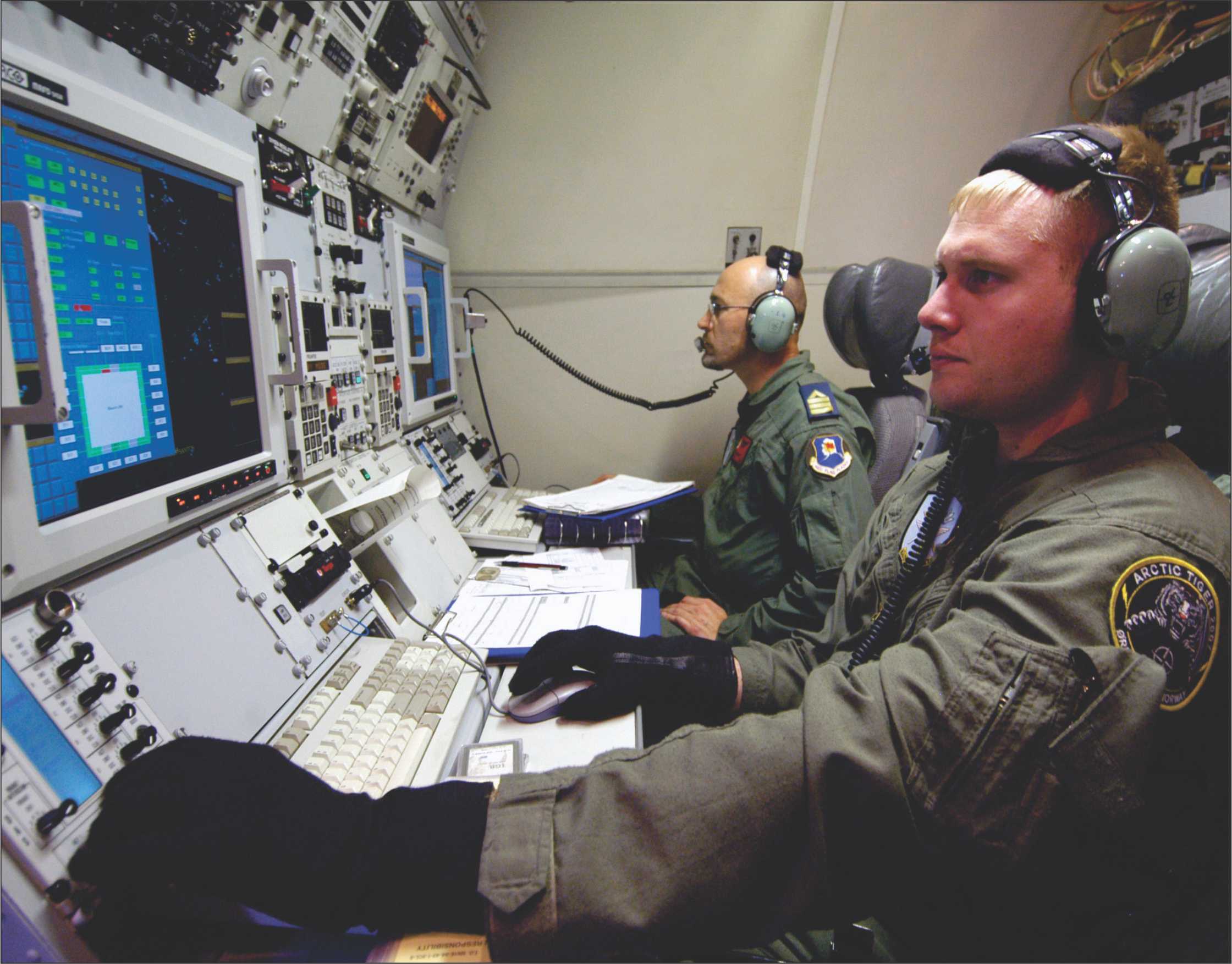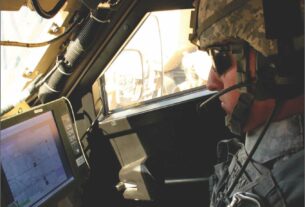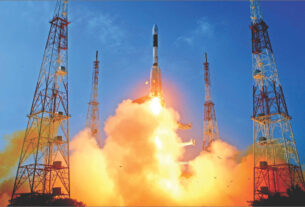NCW provides a level of situational awareness that allows the military to be more flexible, which increases mission effectiveness. However, it is clear that NCW is not by any means without flaws. A heavy reliance on technology is problematic, as it cannot be ruled out that technology may fail, may not be available at the time, or may be targeted by an enemy to reduce war-fighting capability.
As NCW becomes more predominant, steps must be taken to safeguard it from malicious action. It is also imperative that forces can operate in a fall back mode without the NCW doctrine, if required of them.
No matter the advancements in robotics, the importance of the ‘man behind the machine’ will remain relevant. This is equally applicable to Network Centric Warfare (NCW). The success of NCW rests on the idea that information is only useful if it enables more effective action. Significantly, the key to success of NCW is not technology but people who will use it-the human dimension, which is based on professional mastery and mission command requiring high standards of training, education, doctrine, organization and leadership. It is about the way people collaborate to share their awareness of the situation in order to fight more effectively. The human dimension of NCW is complex, difficult to conceptualize and defence forces all over the globe are struggling with the issue, experimenting to achieve breakthroughs in varied measure.
Essential element
Network Centric Warfare is an essential element of modern military operations. It is increasingly relevant to conduct warfare in such a manner that, as a force multiplier, considerably increases a military’s ability to be successful in a wide range of operations.
At the most fundamental level networking aims to accelerate engagement cycles and operational tempo at all levels of a warfighting system. This is achieved by providing a mechanism to rapidly gather and distribute targeting information, and rapidly issued directives. A high speed network permits error free transmission in a fraction of the time required for voice transmission, and permits transfer of a wide range of data formats.
NCW operation depends upon various factors and in a more technical sense, networking improves operational tempo by accelerating the Observation-Orientation phases of Boyd’s Observation-Orientation-Decision-Action (OODA) loop. Identified during the 1970s by US Air Force strategist John Boyd, the OODA is an abstraction which describes the sequence of events which must take place in any military engagement. The opponent must be observed to gather information; the attacker must orient himself to the situation or context, then decide and act accordingly. The OODA loop is thus fundamental to all military operations, from strategic down to individual combat.
Observation-Orientation-Decision are all about gathering information, distributing information, analyzing information, understanding information and deciding how to act upon this information.
The network centric approach to warfare is the military embodiment of information age concepts. Studies have shown that networking enables forces to undertake a different range of missions than non-networked forces, by improving both efficiency and effectiveness of operations. NCW uses computers and communications to link people through information flows that depend on the interoperability of systems used by armed forces.
There are various definitions of the term Network Centric Warfare (NCW), although all agree that NCW’s basic tenet is the use of networked technology to provide an advantage on the battlefield. NCW operations rely heavily on computer equipment and networked communications technology to provide a shared awareness of the battle space.
The prerequisite for an NCW capability is the digitization of combat platforms. A combat aircraft with a digital weapon system can be seamlessly integrated in an NCW environment by providing digital wireless connections to other platforms. Without the digital weapon system, and its internal computers, NCW is not implementable.
Some observers have said that the price of entry into NCW operations is the construction of a network of sensors. For example, aircraft and other platforms become sensors as they are given new capabilities to communicate and combine data, and many weapons are no longer considered simple munitions, but also become part of the system of sensors, as they are guided to their targets until they explode. There are many components on which successful NCW operations depend upon such as secure use of NCW architecture, modern software, satellites, radio bandwidth, unmanned vehicles, nanotechnology and C4I.
NCW involves mainly three domains. Firstly Information Domain which means having disruption technologies to create theatre or battle space blind spots. These include cyber warfare, anti-satellite weapons, under water warfare, and directed energy weapons. Second, Physical Domain which involves contact-less wars, missile warfare, submarine warfare, directed energy weapons and space control weapons.
Third, Cognitive and Social Domain which comprises asymmetric strategies, tactics and operational plans, doctrine to match threat assessments, local and limited conflicts under nuclear hangover.
Satellite
Troops operating in all domains turn to satellite communications (SATCOM) and secure wireless for tactical communications. Responding to an increasing need for instantly accessible, high-speed and secure communications, the militaries around the world are evaluating and deploying a variety of new systems in space, on the ground and even in the air.
The US military’s Mobile User Objective System (MUOS), for example, is a series of next-generation narrow-band tactical satellites designed to significantly improve ground communications for forces on the move. MUOS aims to supply military users with 10 times more communications capability compared to existing systems. Those new capabilities include simultaneous voice, video and data for 3G mobile communications. Satellites provide beyond-line-of-sight communications to small units at remote forward operating bases, many of which are currently unable to use line-of-sight radios due to issues with terrain or distance.
Satellite communications (Satcom) form a vital part of the global communications infrastructure, and play a pivotal role in the global networking of military systems.
In US another step forward in the evolution of satellite communications is the Network Centric Waveform (NCW) being developed under Warfighter Information Network-Tactical (WIN-T) Increment 2. The WIN-T Increment 2 and Increment 3 architectures will utilize NCW for most satellite communications services. The waveform is compatible with virtually all transponder-type satellites, which represent the majority of the communications satellites in use today, including the Wideband Global SATCOM (WGS) constellations. NCW supports a heterogeneous network of SATCOM terminals with varying antenna sizes, power levels and mission requirements, ranging from large-antenna strategic terminals to small tactical mobile terminals with antennas as small as 18 inches in diameter.
Military communications traffic is today carried both by dedicated military satellite constellations, but also through commercial satellites, as the aggregate capacity of all in-service military systems at this time falls well short of demand. While there has been much enthusiasm for the use of commercial services, it is worth observing that these have always been used in conflicts where the opponent has been technologically underdeveloped if not inept.
Unlike military Satcom, which often uses jam resistant modulations and protocols for data transfer, commercial links are usually built only to handle nature’s impediments to transmission, not the carefully crafted jamming waveforms created by human opponents. Therefore, conflicts involving technologically competent opponents will seriously limit what opportunities exist for use of commercial services, as these will be jammed, and jammed effectively more than often.
But an attacker has choices other than jamming. Electromagnetic pulse bombs, especially nuclear ones, can be used to burn out the electronics in a satellite vehicle. Anti-Satellite weapons (ASAT), such as the Chinese launched weapon on a rocket booster, can be used to destroy the SV by impact or by shrapnel/spall and blast effects. In assessing military satellite architectures, the US system is the largest and most complex.
In a networked warfighting environment, Satcom provides a valuable ability to connect to platforms and other user terminals, which are out of reach of the terrestrial infrastructure. As Satcom systems are costly, in long run one can expect increasing use of alternatives, such as UAV ‘pseudolite’ communications relay payloads in applications where the global connectivity of a Satcom constellation is not required operationally. Other technologies which will see increasing use will be phased array antennas for X, Ka, K, Ku-band terminals, especially those carried by military platforms.
Satellite technologies of the future are critical to military operations. Satellites in general are becoming more capable, with higher power and larger aperture antennas to promote frequency re-use and creating highly capable “super-computers-in-the-sky”. With electronically formed beams, the beam patterns can be re-formed on command to respond to needs at different times of day. Future technologies include Advanced Phased Array Antennas, Dynamic Beam Management, Advanced Antenna Systems, more efficient power systems, Turbo-coding, Advanced Modems, and new materials for light weight antennas (Inflatable Antennas).
In Foreign Operating Base (FOB) locations, reliance on communication technologies is crucial, as soldiers, emergency staff, medical technicians, firemen, electricians, construction builders and other resource providers needs to communicate to camp commanders and beyond. Therefore there the importance of satellites for the integration of camp communications cannot be underestimated. The process involves turning data, usually in the form of radio signals, into IP data streams via Internet Protocol addresses, which are then backhauled over the satellite to a teleport and then back to another base or to the home country.
Interoperability
NCW is highly dependent on the interoperability of communications equipment, data, and software to enable networking of people, sensors, and manned and unmanned platforms. Parts of NCW technology rely on line-of- sight radio transmission for microwave or infrared signals, or laser beams. Other parts of the technology aggregate information for transmission through larger network trunks for global distribution via fiber optic cables, microwave towers, or both low altitude and high-altitude satellites. The designs for this technology must enable rapid communications between individuals in all services, and rapid sharing of data and information between mobile platforms and sensors used by all military services.
Further digitization of communications is a key part of military force transformation. Digital technology makes more efficient use of spectrum bandwidth for communications than analog technology.
In future new materials developed through nanotechnology may eventually change battlefield equipment in ways hard to imagine. Weapons may become smaller and lighter, and new miniaturized network sensors may detect, locate, identify, track, and target potential threats more efficiently. In fact United States currently uses nanotechnology to create a heat-resistant coating that extends the life of propulsion shafts for warships, and as an additive to boost the performance of rocket propellant.
In any battlefield the advantage is increasingly derived from information sharing, information access, and speed. This view has been supported by results of recent military operational experience showing that when forces are truly joint, with comprehensively integrated capabilities and operating according to the principles of NCW, they can fully exploit the highly path-dependent nature of information age warfare.
Networked forces can consist of smaller-size units that can travel lighter and faster, meaning fewer troops with fewer platforms and carrying fewer supplies can perform a mission effectively, or differently, at a lower cost.
The ability of Command & Control of forces spread over a large geographical area in a more expeditious and efficient manner is an advantage of new generation NCW capability. Networks ‘harness the power of geographically dispersed nodes by linking them together into networks that allow for the extremely rapid, high-volume transmission of digitized data. The ability to disseminate instructions, information and intelligence to assets dispersed across the globe is particularly vital for military forces at a time when their area of operation is increasing beyond their own territory.
The US-led invasion of Afghanistan in 2001 provides just one of many examples of the successful deployment of the NCW theory of war.
During Operation Enduring Freedom Special Forces on the ground were able to use data and voice links provided by communication satellites to co-ordinate their efforts. Not only were the ground forces able to communicate with each other, but also with F-14’s, F-15E’s, B-1 and B-2 aircraft by laser designating targets that the air support would later destroy with Joint Direct Attack Munitions (JDAM). JDAM-equipped ‘smart munitions’ were guided to their targets by an inertial guidance system and the global positioning system (GPS), once again making use of space-based technologies.
Another example of NCW’s success in operations is Link 16, and the advantage it gives to the air forces that make use of it. Link 16, also known as TADIL-J (Tactical Digital Information Link J) is described as a ‘communication, navigation, and identification system that supports information exchange between tactical command, control, communications, computers, and intelligence (C4I) systems. The system uses encrypted messages and transmissions which are jam resistant to provide the user with a whole host of possible applications. These include surveillance, electronic warfare, mission management/weapons coordination, air control, positive friendly identification and network management.
Role of UAV
The vision for Network Centric Warfare is to provide seamless access to timely information to all war fighters and decision-makers at every echelon in the military hierarchy. This enables all elements, including individual infantry soldiers, ground vehicles, command centers, aircraft and naval vessels, to share the information collected to be combined into a coherent, accurate picture of the battlefield.
Central to the NCW concept is system compatibility and interoperability. The different elements in NCW system must be able to interface and ‘talk’ to each other if the system is to be effective.
Unmanned aerial vehicles (UAVs) also are beginning to play a role in delivering secure communications to troops in virtually any geographic location. Current operational theaters serve as proving grounds for both programmed and experimental UAV; many are successfully supporting the commanders’ situational awareness requirements. Wartime commanders are increasing their requests for unmanned aerial and ground vehicles.. Nowadays militaries cannot progress on the path to implement its vision of NCW without fully integrating UAVs into the theater communications network.
The roles of UAVs continue to expand as aerospace and defence technology firms enhance the capabilities of unmanned vehicle, system and payload electronics.
UAVs will need to be able to carry out a broader range of surveillance missions, demonstrating interoperability with other platforms and a flexible multi role capability to fulfill a variety of mission objectives.
Secure communication links are vital for UAV operation, both to control the UAV based on mission objectives and to deliver data reliably to mission controllers on the ground.
The key to the future of UAVs will be their ability to work in coordination with other combat platforms to support the warfighters on the ground. Many UAV manufacturers around the world are developing software and advance technologies which can make UAVs capable of networking effortlessly with other platforms while ensuring safe and secure transmission.
All nations are currently on the road to digitization, transforming their armed forces into a coherent and synchronized organization, enhancing the speed of sensing, decision making and proactive action.
Today, it is possible to network digitized platforms and soldiers into a coherent sensor-command-shooter grid, with sensors, weapon systems, decision makers and shooters/actors connected with state-of-the-art communication systems.
Military commanders are increasingly moving towards integrated C4ISTAR solutions to make effective command and control decisions in the ‘digital’ battlefield environment.
NCW in India
Technology has widely affected the battlefield environment in last few decades. The technological boom in today’s battlefield scenario has contributed towards increased intelligence and surveillance capabilities. Technological advancement has provided enhanced weapon range, accuracy and lethality. Technology has also culminated in improved data transmission with increased volumes with high speeds. The impact of technology has provided militaries with faster processors and miniaturization.
Modern age is of technology and information. The numerical strength does not matter; it is the level of technological advancement and superiority that matters. It is expected that future wars would be limited, swift and quick. Only those countries will make the difference, which possesses NCW and EW capabilities.
Indian military is planning to revamp its overall military machine in next 10 to 15 years. The integration of communications is taking place at the strategic level. All networks are designed and intended towards a target. The integration is taking place Corps HQ downwards and thereafter at the lateral level. NCW focuses on co-relation between speedy attainment of operational level aims and strategic objectives.
The NCW vision of the Indian Army includes transformation into a dynamic network centric force, achieving information superiority through effective management of information technology. Indian Army has made adequate progress in Geo Information System (GIS) which provides the spatial orientation and context to the OIS and MIS system. It forms the base over which the other functionalities and applications ride. The modern GIS system includes features of network analysis, 3D visualisation, flythrough & simulation. A few of them also possess the image processing and change detection. Army Strategic Operational Information Dissemination System (ASTROIDS) is a secure information dissemination system which connects Army Headquarters with Command and Corps Headquarters for exchange of terrain, operations intelligence and logistics information.
As all future operations would be joint operations and that the net centric concept is not just restricted to a single service, the desired level of synergy, the flow of correlated and intelligent information between the three Services is essential.
Synergy and integration is the result of effective NCW capabilities. To achieve this seamlessness and integration, Indian military has carried many major exercises in last decade.
In these exercises Indian military introduced and practiced its latest weapon & equipment, force multipliers like LORROS, FMCP, AWACS, UAVs, satellites, battlefield surveillance radars, weapon locating radars, and mechanized forces. From 2004 to 2012 Indian military has practiced its NCW capabilities in almost every exercise. NCW is a process and India is on way to achieve this capability.
Satellites are essential part of NCW. Indian military has also developed its space based assets to augment its NCW and EW capabilities. The recent satellite launch for Navy has added another feather in the cap of Indian military’s NCW structure.
This particular satellite will facilitate networking of IN warships, submarines and aircraft among themselves as well as with operational centers ashore through high-speed data-links, allowing maritime threats to be detected and shared in real-time to ensure swift reaction.
Soon IAF will also have its communication satellite in place. Efforts to establish a dedicated aerospace command, networking all the three forces, is also in the pipeline which will soon see the day of the light.
Along with developing and buying modern UAVs for NCW role, India is also investing heavily in its radars to meet the requirements of NCW. From WLR to battlefield surveillance radars, India is working to develop more advanced radars which can easily detect, track and classify targets while operating in tandem with other networked platforms to give an edge to the troops.
From the use of cavalry units at the outbreak of the World War I to the deployment of Unmanned Aerial Vehicles in recent conflicts, technology has allowed the way in which military operations are conducted to evolve considerably.
However, it is not simply new weapons, aircraft or warships that are transforming the militaries of today. The way in which forces communicate, disseminate intelligence, are issued orders, and report back to their commanders has been revolutionized through the use of networks. More specifically, satellite, computer, radio and data networks link nearly all military assets at a state’s disposal to each other and to the decision makers.
The NCW gives a military the ability to attain a high level of shared battlespace awareness that is exploited to achieve strategic, operational, and tactical objectives, not just in joint warfare in a specific theatre of operations, but also the coordination of dispersed forces at a global level.





